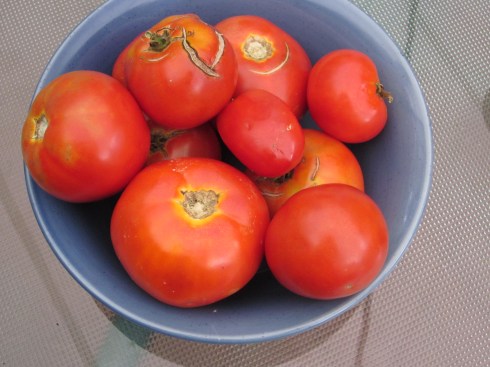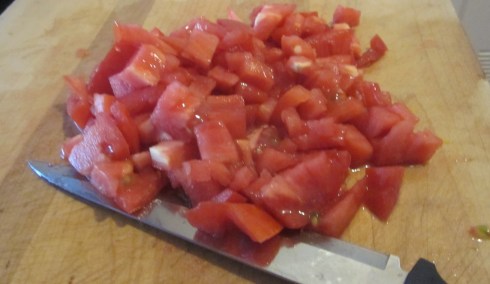“What made you choose this place?” I asked Eugene as our group convened at the Cafe Himalaya in the East Village.
“We’ve never had Himalayan food before,” was his response.
“Himalayan food?”
“Yeah.”
“You mean, Tibetan and Nepali food,” I said, pointing to what was written under the restaurant’s awning and on the menu.
“No Himalayan,” Eugene corrected me.
“But isn’t Himalayan food from Tibet and Nepal?” I queried.
“It is?”
“And didn’t you, several years ago, choose a place called Himalayan Yak?”
Eugene was perplexed. “I did?”
“Yes you did,” I said. “You don’t remember?”
He was lost for a moment and then waved his hand derisively. “How do you expect me to remember these things,” he snapped before quickly proceeding to bury his face in his menu.
This was our second attempt to get to the Cafe Himalaya. Our first, the previous week, was cancelled due to flooding on the Westchester roads. Everyone but Rick was available the following week so rescheduling was easy.
Seating was tight at the Cafe Himalaya. Zio was wedged so tightly between Mike from Yonkers and Eugene it was as if he was encased in a swarthy sausage casing. It didn’t help that the humidity was high and the lone air conditioner was struggling above the constantly opened front door.
Business was brisk, both outgoing and at the tables. Our harried waitress didn’t waste any time arriving at our table with pencil and pad in hand ready to take our order. Though we did visit a “Himalayan” place several years ago, Himalayan Yak (Yak Under the Tracks) did not have momos (dumplings) on the menu. Cafe Himalaya did, however, and we ordered two, one, pan-fried and stuffed with potato and the other, steamed and filled with ground chicken and herbs.
The café’s most popular dishes were written on the blackboard above the entrance to the kitchen and most of us ordered from there including myself when I ordered the tsel dofu, or vegetables and tofu in a spicy sauce.
Where the rest of us pointed to what we wanted on the menu or recited the corresponding number, Mike from Yonkers, in his best Tibetan, barked “Shapta,” to the waitress as she came to him for his order. But either she didn’t hear or she just wasn’t used to someone actually reciting the food they wanted to order.
“Shapta,” he repeated in a louder voice and this time she understood.
The momos came out first; the “tsel” or vegetarian, in my opinion, the better of the two. The chicken momo was an acquired taste and one I could not find it in myself to acquire. Despite our typically overwhelming hunger, there were momos left on our plates—a sign that at Himalaya Café the momos were mediocre.
When our entrees began to arrive the waitress called out “shapta.” I knew I didn’t order the shapta but no one was responding. She said it again and Mike from Yonkers waved his hand. “Shapta over here,” he said and she placed the platter of spicy, thinly sliced beef in front of him.
While Mike from Yonkers was examining his shapta, Eugene was quickly devouring the chicken curry, reminiscent, of Indian chicken curry but with the addition of yogurt giving the sauce a pinkish hue.
“How’s the Himalayan chicken curry,” I asked Eugene, not daring to sample any myself lest I risk getting speared by his rapidly plunging fork.
“It’s good,” he mumbled half-heartedly and then went back to silently devouring his food.
I wasn’t sure what it was Gerry ordered but noticed the pieces of white meat chicken and an abundance of broccoli.
“Chicken and broccoli?” I inquired
“Something like that,” Gerry said after a taste.
Zio’s “chili chicken” pieces of thin, fried boneless chicken and vegetables, was, from my sampling, very much like Mike from Yonkers’ shapta; the same vegetable and sauce. Though advertised as spicy both dishes benefited by the additional zest provided by the restaurant’s hot sauce.
Crowds were beginning to mingle outside the tiny restaurant. Eyes were on our coveted table. I kept pace with the others as we made quick work of our meals. Mike from Yonkers, however, crowds be damned, deliberately picked at his shapta, spooning small bits onto a few kernels of Basmati rice before shoveling it into his mouth. It was getting hotter inside the restaurant. Customers waiting for tables were hovering over ours.
“It’s time, Mike,” Eugene bellowed from Zio’s opposite side.
“All right, I’m done,” Mike from Yonkers announced, putting down his fork.
Our bill was quickly brought to us with the final result well under our $20 per person budget.
We sprawled out onto Houston Street and as we did, a group of eager Tibetan and/or Nepali food aficionados swooped in and took over our table for four where we had fit five. The momos weighed heavily in my belly. Sweat marks had formed under the armpits of Zio’s stylish extra extra large t-shirt. “Good job, Eugene,” he said. “But I have a question.”
“What’s that?”
“Do you have to wait for a table in Nepal?”
Eugene had no answer of course, but we could all clearly agree that our group of intrepid, yet slovenly diners, during our now 12 year run, had yet to wait for a table anywhere in our cheap eats hot zone that encompassed, among other places, the Bronx, Brooklyn, Queens, Yonkers, and yes, even the rarefied streets of the East Village.
Cafe Himalaya
78 E. 1st St.
East Village












